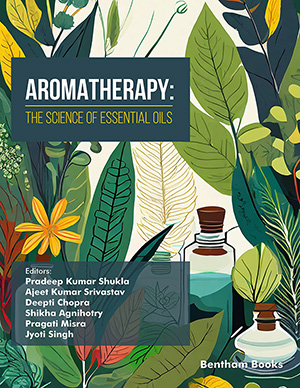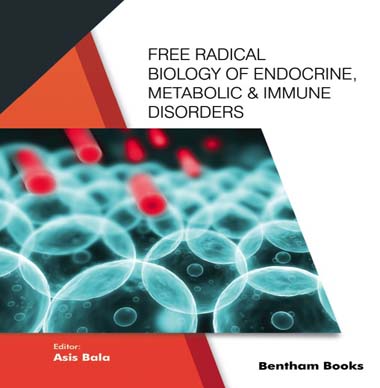
Abstract
Background: The term “hematological malignancy” means a cluster of cancer and tumor conditions, including leukemia, lymphoma, myeloproliferative neoplasm, lymphoproliferative disorders, etc., involved with circulatory organs like blood, bone marrow, lymph, and lymph nodes.
Introduction: The increase in the number of hematological malignancy-related cases in our modern society urges suitable treatment of such disease. In this current era, there is still a major deficiency in the number of suitable chemotherapeutic agents for the treatment of hematological malignancies.
Methods: The researchers were successful in identifying various cellular, extracellular proteins, and cytokines, as well as their involvement in different hematological malignancies via epigenetic modulation and regulation of other proteins and signaling pathways. Here, we have discussed the structural aspects, connection, and pathophysiological contributions of a group of different cellular and extracellular proteins that are regulated and/or have a significant influence on the progression of different hematological malignancies along with their potent inhibitors.
Result and Conclusion: The correlation of physiological proteins with cancerous hematological conditions has been discussed here. It can be crucial for the development of potent inhibitors as chemotherapeutic agents to contest such malignancies. This review will also be useful in the chemotherapeutic agent development by providing crucial information about such hematological malignancy-related proteins and their inhibitors. The repurposed drugs with potential for anticancer applications are also discussed.
Keywords: Hematological malignancies, PIM kinase, MMPs, HDACs, DNMT, tyrosine kinase, RUNX.
[http://dx.doi.org/10.1016/j.semcancer.2017.07.005] [PMID: 28782607]
[http://dx.doi.org/10.1186/s12885-017-3207-7] [PMID: 28335744]
[http://dx.doi.org/10.18632/oncotarget.15981] [PMID: 28415662]
[http://dx.doi.org/10.2353/ajpath.2006.060312] [PMID: 16877336]
[http://dx.doi.org/10.1182/blood-2016-03-643544] [PMID: 27069254]
[http://dx.doi.org/10.1093/annonc/mdl443] [PMID: 17311819]
[http://dx.doi.org/10.1182/blood-2016-01-643569] [PMID: 26980727]
[http://dx.doi.org/10.1016/j.ejmech.2019.03.050] [PMID: 30954777]
[http://dx.doi.org/10.1016/j.pharmthera.2017.02.011] [PMID: 28188812]
[http://dx.doi.org/10.1038/leu.2016.126] [PMID: 27137476]
[http://dx.doi.org/10.1038/s41408-018-0054-y] [PMID: 29426921]
[http://dx.doi.org/10.1182/blood-2017-02-734541] [PMID: 28600336]
[PMID: 24699024]
[http://dx.doi.org/10.3390/jcm5030033] [PMID: 26959069]
[http://dx.doi.org/10.1038/bcj.2016.50] [PMID: 27367478]
[http://dx.doi.org/10.1182/blood-2009-03-209262] [PMID: 19357394]
[http://dx.doi.org/10.1182/blood-2014-11-610543] [PMID: 25550361]
[http://dx.doi.org/10.1038/nm0797-730] [PMID: 9212098]
[http://dx.doi.org/10.1111/j.1365-2141.1989.tb07677.x] [PMID: 2757962]
[http://dx.doi.org/10.1093/ajcp/106.2.185] [PMID: 8712171]
[http://dx.doi.org/10.4082/kjfm.2015.36.5.197] [PMID: 26435808]
[http://dx.doi.org/10.1038/s41375-019-0490-0] [PMID: 31127148]
[http://dx.doi.org/10.1038/sj.leu.2402912] [PMID: 12835715]
[http://dx.doi.org/10.1172/JCI41246] [PMID: 20592475]
[http://dx.doi.org/10.3322/caac.21438] [PMID: 29194581]
[http://dx.doi.org/10.1056/NEJMoa023141] [PMID: 14523140]
[http://dx.doi.org/10.1093/jnci/djj361] [PMID: 16985251]
[http://dx.doi.org/10.1038/bcj.2017.53] [PMID: 28665419]
[http://dx.doi.org/10.1002/cncr.29383] [PMID: 25891003]
[http://dx.doi.org/10.1038/nature05690] [PMID: 17344859]
[http://dx.doi.org/10.6004/jnccn.2015.0153] [PMID: 26483064]
[http://dx.doi.org/10.4065/80.11.1517] [PMID: 16295033]
[http://dx.doi.org/10.1111/j.1365-2141.1976.tb03563.x] [PMID: 188440]
[http://dx.doi.org/10.1200/JCO.1999.17.12.3835] [PMID: 10577857]
[http://dx.doi.org/10.1038/s41571-019-0239-8] [PMID: 31278397]
[http://dx.doi.org/10.1038/nrdp.2016.96] [PMID: 28102226]
[http://dx.doi.org/10.1182/blood-2011-11-393694] [PMID: 22415752]
[http://dx.doi.org/10.1056/NEJM200012283432602] [PMID: 11136261]
[http://dx.doi.org/10.1158/2159-8290.CD-14-0104] [PMID: 24920063]
[http://dx.doi.org/10.1182/blood-2007-10-078022] [PMID: 18332230]
[http://dx.doi.org/10.3238/arztebl.2016.0470] [PMID: 27476706]
[http://dx.doi.org/10.1056/NEJMoa01133202] [PMID: 11856795]
[http://dx.doi.org/10.1155/2017/6934183] [PMID: 29250532]
[http://dx.doi.org/10.1038/sj.leu.2404832] [PMID: 17625611]
[http://dx.doi.org/10.1182/blood-2011-11-390658] [PMID: 22234687]
[http://dx.doi.org/10.1053/j.seminhematol.2013.01.005] [PMID: 23507483]
[http://dx.doi.org/10.1038/nrc3895] [PMID: 25693834]
[http://dx.doi.org/10.1101/cshperspect.a030320] [PMID: 28003281]
[http://dx.doi.org/10.1038/890] [PMID: 9662389]
[http://dx.doi.org/10.1126/science.1195380] [PMID: 21163962]
[http://dx.doi.org/10.1016/S0014-5793(99)00132-5] [PMID: 10100640]
[http://dx.doi.org/10.1007/s00412-009-0240-6] [PMID: 19730874]
[http://dx.doi.org/10.1038/nature06146] [PMID: 17713477]
[http://dx.doi.org/10.1016/S0092-8674(00)81656-6] [PMID: 10555141]
[http://dx.doi.org/10.1182/blood.V97.5.1172] [PMID: 11222358]
[http://dx.doi.org/10.1038/ng.1009] [PMID: 22138693]
[http://dx.doi.org/10.1038/ng.788] [PMID: 21399634]
[http://dx.doi.org/10.1182/blood-2011-03-343988] [PMID: 21881046]
[http://dx.doi.org/10.1016/j.stem.2009.08.016] [PMID: 19796624]
[http://dx.doi.org/10.1007/978-981-10-3233-2_5] [PMID: 28299651]
[PMID: 32024352]
[http://dx.doi.org/10.1182/blood-2016-10-687830] [PMID: 28179279]
[http://dx.doi.org/10.1073/pnas.93.8.3444] [PMID: 8622955]
[http://dx.doi.org/10.1093/emboj/cdf370] [PMID: 12093746]
[http://dx.doi.org/10.1016/j.bcmd.2009.01.009] [PMID: 19233693]
[http://dx.doi.org/10.1093/emboj/20.4.723] [PMID: 11179217]
[http://dx.doi.org/10.1038/nsmb819] [PMID: 15322525]
[http://dx.doi.org/10.1016/j.exphem.2010.02.011] [PMID: 20206228]
[http://dx.doi.org/10.1006/bbrc.1998.9705] [PMID: 9837750]
[http://dx.doi.org/10.1074/jbc.M112.402594] [PMID: 23148227]
[http://dx.doi.org/10.1158/0008-5472.CAN-09-1057] [PMID: 19808967]
[http://dx.doi.org/10.1038/cddis.2013.127] [PMID: 23618908]
[http://dx.doi.org/10.1155/2013/271347] [PMID: 24078903]
[http://dx.doi.org/10.1038/bjc.2015.305] [PMID: 26528706]
[http://dx.doi.org/10.1038/nm1443] [PMID: 16892037]
[http://dx.doi.org/10.1182/blood-2012-03-414649] [PMID: 22613795]
[http://dx.doi.org/10.1182/blood-2012-01-403212] [PMID: 22337712]
[http://dx.doi.org/10.1182/blood-2010-12-326710] [PMID: 22021368]
[http://dx.doi.org/10.1073/pnas.93.24.14059] [PMID: 8943060]
[http://dx.doi.org/10.1073/pnas.1531730100] [PMID: 12881486]
[http://dx.doi.org/10.1182/blood-2008-01-134122] [PMID: 18695000]
[http://dx.doi.org/10.1016/j.bbrc.2004.07.169] [PMID: 15325275]
[http://dx.doi.org/10.1038/bcj.2015.46] [PMID: 26186558]
[http://dx.doi.org/10.1186/s13045-014-0095-z] [PMID: 25491234]
[http://dx.doi.org/10.1146/annurev.pharmtox.37.1.297] [PMID: 9131255]
[http://dx.doi.org/10.1006/bbrc.2001.4405] [PMID: 11237709]
[http://dx.doi.org/10.1038/nrc2986] [PMID: 21150935]
[http://dx.doi.org/10.1182/blood-2013-01-481457] [PMID: 23818547]
[PMID: 10197595]
[http://dx.doi.org/10.1038/onc.2008.123] [PMID: 18438430]
[http://dx.doi.org/10.1016/j.ccr.2010.01.021] [PMID: 20227039]
[http://dx.doi.org/10.1186/1471-2121-7-1] [PMID: 16403219]
[http://dx.doi.org/10.1074/jbc.M709695200] [PMID: 18467333]
[http://dx.doi.org/10.1016/j.biocel.2010.03.012] [PMID: 20307683]
[http://dx.doi.org/10.1080/10428190310001641251] [PMID: 15291354]
[http://dx.doi.org/10.1080/10428190802419640] [PMID: 19021050]
[http://dx.doi.org/10.1038/35085588] [PMID: 11460166]
[http://dx.doi.org/10.1038/bjc.2012.272] [PMID: 22722314]
[http://dx.doi.org/10.1016/j.leukres.2007.11.028] [PMID: 18180034]
[http://dx.doi.org/10.1073/pnas.1201168109] [PMID: 22451912]
[http://dx.doi.org/10.1038/leu.2011.60] [PMID: 21475253]
[http://dx.doi.org/10.1038/leu.2014.147] [PMID: 24787487]
[http://dx.doi.org/10.1084/jem.20082074] [PMID: 19687226]
[http://dx.doi.org/10.1182/blood-2006-05-024844] [PMID: 16888090]
[http://dx.doi.org/10.1158/1535-7163.MCT-13-0575-T] [PMID: 24659821]
[http://dx.doi.org/10.1038/onc.2009.124] [PMID: 19483729]
[PMID: 27509927]
[http://dx.doi.org/10.1016/j.phrs.2017.05.002] [PMID: 28501516]
[http://dx.doi.org/10.1016/j.ejmech.2020.112260] [PMID: 32224379]
[http://dx.doi.org/10.1007/s10555-019-09828-y] [PMID: 31802358]
[http://dx.doi.org/10.1016/j.mrrev.2013.01.002] [PMID: 23370482]
[http://dx.doi.org/10.1016/j.ejmech.2017.09.052] [PMID: 29028530]
[http://dx.doi.org/10.1177/1010428317694325] [PMID: 28240053]
[http://dx.doi.org/10.1182/blood-2006-03-007294] [PMID: 16840734]
[http://dx.doi.org/10.1016/j.ccr.2009.12.044] [PMID: 20159608]
[PMID: 10353746]
[http://dx.doi.org/10.1038/leu.2014.205] [PMID: 24990611]
[http://dx.doi.org/10.1159/000479210] [PMID: 28719899]
[http://dx.doi.org/10.1046/j.1365-2141.2002.03510.x] [PMID: 12060118]
[http://dx.doi.org/10.1002/hon.817] [PMID: 17497745]
[http://dx.doi.org/10.1016/j.bbagrm.2015.07.016] [PMID: 26260845]
[http://dx.doi.org/10.1016/j.bcmd.2020.102405] [PMID: 32007924]
[http://dx.doi.org/10.1016/j.bbrc.2019.09.127] [PMID: 31585732]
[http://dx.doi.org/10.3892/ol.2019.10477] [PMID: 31423275]
[http://dx.doi.org/10.1016/j.ejmech.2018.12.039] [PMID: 30594678]
[http://dx.doi.org/10.1039/C5RA12606A]
[http://dx.doi.org/10.1186/s12943-019-1127-7] [PMID: 31910827]
[http://dx.doi.org/10.1016/j.biocel.2014.02.019] [PMID: 24594363]
[http://dx.doi.org/10.1615/CritRevOncog.2013010187] [PMID: 24579733]
[http://dx.doi.org/10.1182/blood-2005-12-010934] [PMID: 16849648]
[http://dx.doi.org/10.1186/s13148-020-00839-z] [PMID: 32430012]
[http://dx.doi.org/10.1093/carcin/bgt070] [PMID: 23430957]
[http://dx.doi.org/10.1016/j.exphem.2012.10.012] [PMID: 23111066]
[http://dx.doi.org/10.1186/s12964-019-0393-8] [PMID: 31358016]
[http://dx.doi.org/10.1158/1541-7786.MCR-18-0922] [PMID: 30814129]
[http://dx.doi.org/10.1016/j.lfs.2019.116583] [PMID: 31226417]
[http://dx.doi.org/10.3390/ijms20092271] [PMID: 31071955]
[http://dx.doi.org/10.3892/ol.2019.10410] [PMID: 31423206]
[http://dx.doi.org/10.1371/journal.pone.0202935] [PMID: 30142192]
[http://dx.doi.org/10.1038/leu.2017.144] [PMID: 28490812]
[http://dx.doi.org/10.1038/leu.2017.130] [PMID: 28462918]
[http://dx.doi.org/10.1182/blood.2019003538] [PMID: 32315388]
[http://dx.doi.org/10.1016/j.lfs.2018.06.004] [PMID: 29886060]
[http://dx.doi.org/10.1002/mc.22983] [PMID: 30693983]
[http://dx.doi.org/10.3390/ijms19082337] [PMID: 30096875]
[http://dx.doi.org/10.1186/s13045-018-0654-9] [PMID: 30176876]
[http://dx.doi.org/10.1182/bloodadvances.2018020065] [PMID: 30425065]
[http://dx.doi.org/10.3390/ijms20143429] [PMID: 31336846]
[http://dx.doi.org/10.4081/oncol.2012.e8] [PMID: 25992210]
[http://dx.doi.org/10.1038/sj.onc.1203957] [PMID: 11114734]
[http://dx.doi.org/10.1038/s41375-018-0357-9] [PMID: 30651634]
[http://dx.doi.org/10.2147/OTT.S102504] [PMID: 27570458]
[http://dx.doi.org/10.1038/nrc1567] [PMID: 15719031]
[http://dx.doi.org/10.1159/000140633] [PMID: 18566539]
[http://dx.doi.org/10.1038/sj.onc.1205317] [PMID: 12032772]
[http://dx.doi.org/10.1158/1078-0432.CCR-10-1613] [PMID: 22156549]
[http://dx.doi.org/10.1111/imr.12245] [PMID: 25510273]
[http://dx.doi.org/10.1038/nrc3907] [PMID: 25786696]
[http://dx.doi.org/10.1146/annurev.immunol.25.022106.141606] [PMID: 17129175]
[http://dx.doi.org/10.1111/imr.12142] [PMID: 24329800]
[http://dx.doi.org/10.1182/blood-2003-02-0342] [PMID: 12958064]
[http://dx.doi.org/10.1182/blood.V76.12.2462.2462] [PMID: 2265242]
[http://dx.doi.org/10.1182/blood.V59.1.1.1] [PMID: 7032624]
[http://dx.doi.org/10.4161/mabs.1.6.10015] [PMID: 20073127]
[http://dx.doi.org/10.1182/blood.V90.6.2188] [PMID: 9310469]
[http://dx.doi.org/10.1073/pnas.86.24.10024] [PMID: 2513569]
[http://dx.doi.org/10.1038/nbt0102-70] [PMID: 11753365]
[http://dx.doi.org/10.1182/blood-2011-10-384388] [PMID: 22160384]
[http://dx.doi.org/10.1126/scitranslmed.3005930] [PMID: 23515080]
[http://dx.doi.org/10.1056/NEJMoa1215134] [PMID: 23527958]
[http://dx.doi.org/10.1200/JCO.2014.56.2025] [PMID: 25154820]
[http://dx.doi.org/10.1126/science.1198687] [PMID: 21212348]
[http://dx.doi.org/10.1189/jlb.0613343] [PMID: 24096380]
[http://dx.doi.org/10.1126/science.1068440] [PMID: 11896281]
[http://dx.doi.org/10.1056/NEJMoa1200503] [PMID: 22931314]
[http://dx.doi.org/10.1182/blood-2004-12-4825] [PMID: 15731175]
[http://dx.doi.org/10.1016/S0301-472X(99)00143-5] [PMID: 10706072]
[http://dx.doi.org/10.1056/NEJMoa1003466] [PMID: 20525992]
[http://dx.doi.org/10.1158/1078-0432.CCR-11-1595] [PMID: 21900389]
[http://dx.doi.org/10.1182/blood-2008-07-168468] [PMID: 18974373]
[http://dx.doi.org/10.1182/blood-2009-09-246124] [PMID: 20197554]
[http://dx.doi.org/10.1038/nrc1613] [PMID: 15864281]
[http://dx.doi.org/10.1007/s00277-015-2412-1] [PMID: 26048243]
[http://dx.doi.org/10.1038/nrd1468] [PMID: 15286734]
[http://dx.doi.org/10.1002/ijc.28261] [PMID: 23649791]
[http://dx.doi.org/10.1126/scitranslmed.3001862] [PMID: 21525397]
[http://dx.doi.org/10.1016/j.ejmech.2020.112559] [PMID: 32563814]
[http://dx.doi.org/10.1002/tera.1420160113] [PMID: 331548]
[http://dx.doi.org/10.1056/NEJM199911183412102] [PMID: 10564685]
[http://dx.doi.org/10.1182/blood-2008-04-152678] [PMID: 18824593]
[http://dx.doi.org/10.2174/138161208785294654] [PMID: 18691115]
[http://dx.doi.org/10.2174/1389450119666180803121737] [PMID: 30073924]
[http://dx.doi.org/10.1056/NEJM200006293422603] [PMID: 10874062]
[http://dx.doi.org/10.1016/j.biopha.2016.11.026] [PMID: 27884749]
[http://dx.doi.org/10.7164/antibiotics.28.727] [PMID: 1102509]
[http://dx.doi.org/10.1046/j.1523-1755.2001.00460.x] [PMID: 11135052]
[http://dx.doi.org/10.1242/jcs.051011] [PMID: 19812304]
[http://dx.doi.org/10.1097/CAD.0b013e32835739dd] [PMID: 22863973]
[PMID: 11497296]
[http://dx.doi.org/10.1016/j.cmet.2010.03.014] [PMID: 20444419]
[http://dx.doi.org/10.12659/MSM.901850] [PMID: 28557972]
[http://dx.doi.org/10.1016/S0301-472X(03)00192-9] [PMID: 12962723]
[http://dx.doi.org/10.1186/1471-230X-12-36] [PMID: 22530742]





























